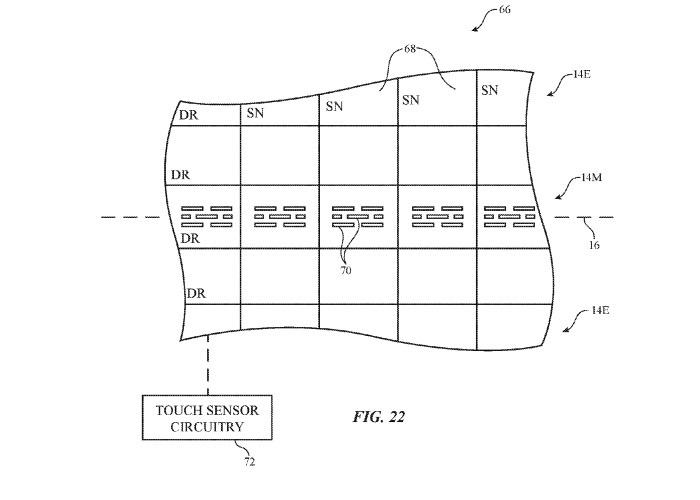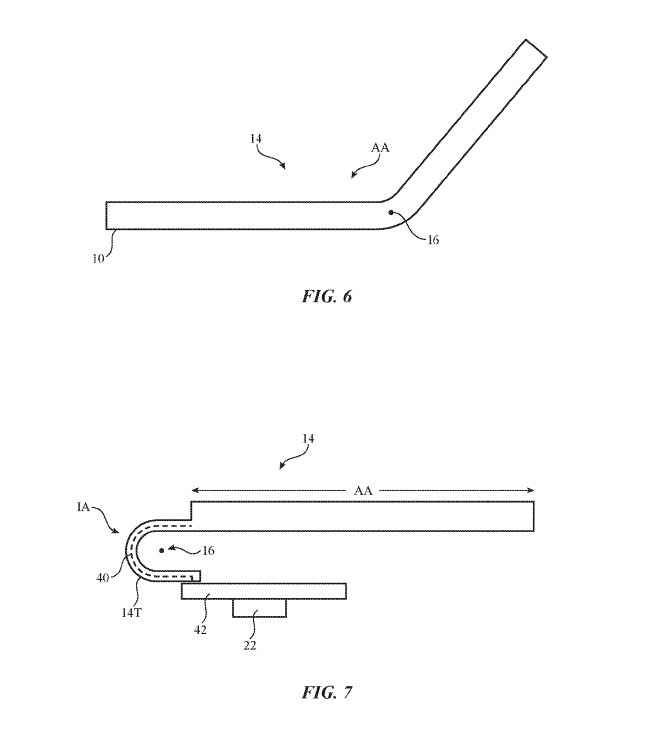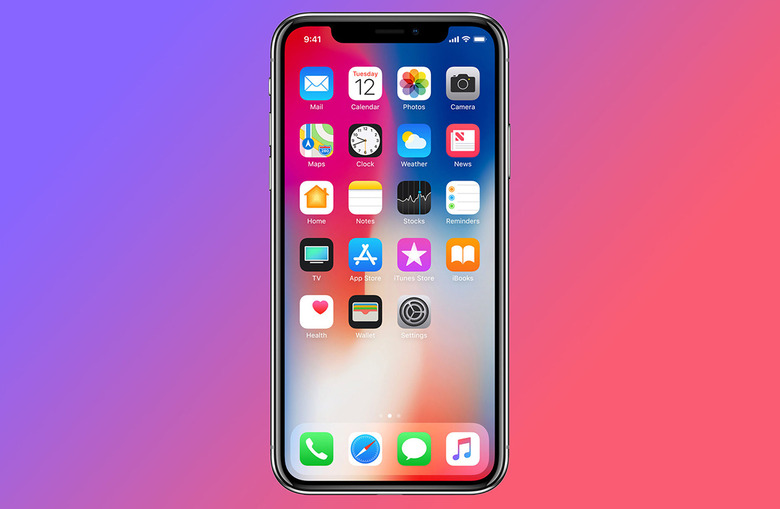This Is How A Foldable iPhone X Would Work
The iPhone X has the biggest screen-to-front ratio ever seen in an iPhone, but Apple isn't done enlarging the display. A report earlier this week said Apple is already working with LG on bendable screen designs. The company is apparently trying to keep its plan secret from Samsung, which is currently the only supplier of foldable OLED screens.
Meanwhile, a patent application surfaced on Thursday, describing exactly screen technology that would allow Apple to manufacture devices with foldable displays.
Titled Electronic Devices With Displays, US patent application 20170294495 was published on Thursday, with Apple Insider spotting it first. The patent application is rather new, having been filed on August 30th, 2016.
While the title of the patent application is as generic as they get, it's clear from the abstract that it details foldable devices. Here are the first two sentences:
An electronic device may have a flexible portion that allows the device to be folded. The device may have a flexible display.
The patent goes on to identify the screen technology that Apple would use in such products, including both OLED and micro LED screens.
Furthermore, the patent explains the technology could be used to equip other devices with a foldable screen, not just smartphones. The lists include laptops, tablets, wristwatches, and other devices. It so happens that Apple already makes laptops, tablets, wristwatches and other devices in addition to mobile phones. Fancy that!
The patent focuses specifically on technology that would allow a device to bend along a bend axis, without breaking the display, or affecting its functionality. Instead, Apple wants to reinforce the display with enhanced flexibility regions that will allow a display to bend without affecting performance or show bend-related stress lines along the folded area.

What's interesting about Apple's patent is that the hinge could be used to fold a smartphone whichever the user desires. For example, the screen could be folded like a book or laptop with the display's active area facing the user (fig. 6). But the flexible device could be folded like a wallet too, with the display occupying the outer area of the gadget (fig. 7).

Just because Apple is currently researching this technology, it doesn't mean we'll find it in iPhone X successors in the coming years. It may be just one of the various option Apple has to engineer such products. But it seems certain that the only way to increase the iPhone's display, other than removing the iPhone X's notch and increasing the phone's size, is to adopt bendable displays.
